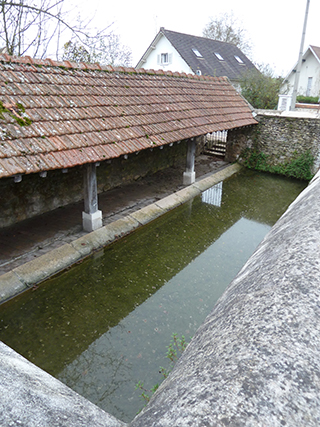Prochain point : lat="49.024988" lon="1.75201"

La Grenouillère Wash House
The 19th century, the golden age for wash houses
A necessity for public health...
In the past, people would usually go to a river or stream to do their washing on a sloping rock or a simple board. But in the nineteenth century, epidemics and industrial pollution were rife. In 1832, for example, the village of Fontenay-Saint-Père recorded 14 cholera victims. Hygiene became a matter of public health. Under Napoleon III, the legislative assembly passed the law of 3 February 1851, whereby a special credit to the value of 30% was approved to help with the construction of public baths and wash houses. In certain villages, women could use the wash houses free of charge, while in others they had to pay to use them.
...that was brought to an end by plumbed water
After 1850, wash houses were to be found all over France. They were just as we know them today: fitted out, covered and turned into functional buildings. During the first half of the twentieth century, the number of wash boilers rose dramatically.
However, they gradually fell into disuse during the twentieth century with the advent of plumbed water and home electrical appliances. The first patent for a manual washing machine, operated by a handle, was submitted to the National Industrial Property Institute in 1904.





